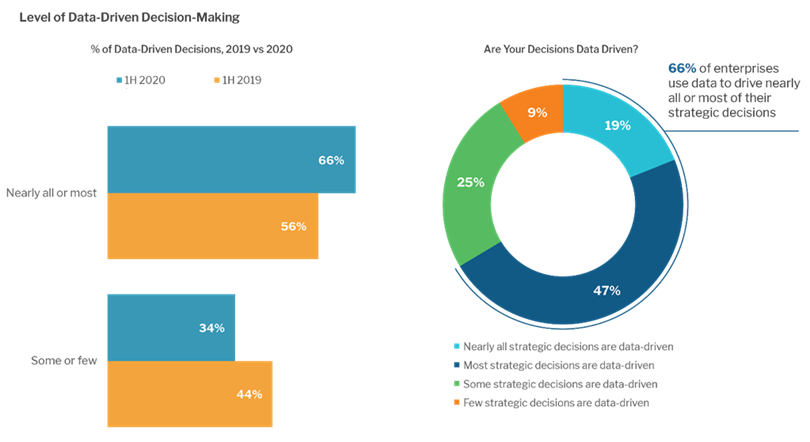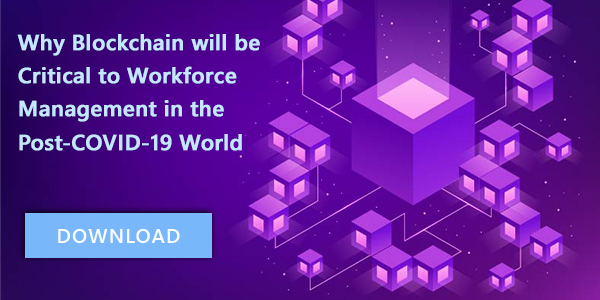
Thanks to expanding networks and increasing connectivity, we are constantly creating new data. Data is a commodity that is continuously increasing in both volume and value – so how do organizations obtain and leverage it?
Data is key to many organizations’ success. Data-driven decision-making is being used in many ways: responding faster to business needs, gaining competitive advantage, lowering costs and improving customer experience, just to mention a few.
A study conducted by the 451 Alliance shows a growing majority (66%) of enterprises say that most or nearly all their strategic decisions are driven by data, which is a 10% increase from the previous year.

Where are organizations finding this data?
Organizations may either collect it themselves or acquire it from data providers. In most cases, they use an array of internal and external sources, especially the ‘data drivers,’ those organizations that make nearly all their strategic decisions based on data (nearly 20% of organizations).
Just as other commodities are traded on exchanges and marketplaces, data can be, too. Data marketplaces are meant to connect data providers with data consumers by providing an online platform where they can interact and trade in an easy, automated way.
A variety of data marketplaces have popped up on the scene, evolving into a few categories:
Third-party data marketplaces
Third-party data marketplaces aggregate external data from different sources and providers, doing the heavy lifting for users by discovering and contracting data. In addition, they offer services to enable organizations to access data quickly and easily and use it in a meaningful way.
Data providers can use these marketplaces as an extension of their sales forces to target new customers. For those that don’t have the resources or skills, these platforms remove the need to build and maintain their own infrastructure.
Examples of third-party data marketplaces include: AWS Data Exchange (ADX), Dawex, DemystData, Openprise and the Snowflake Data Marketplace. Some of these offerings further specialize in vertical markets or types of data. For example, ADX is a cloud-native data marketplace that data subscribers can use in conjunction with a range of AWS analytics services. DemystData primarily focuses on serving the financial and insurance markets, and Openprise supports companies’ marketing and sales teams.
Collaborative data marketplaces
Collaborative data marketplaces, also known as federated marketplaces, typically lack middlemen and are designed to remove organizational boundaries. The goal is ease of use and built-in trust for the data providers that power them. These marketplaces foster a business model where success is as much about enabling your partners and customers to gain more value and innovate as it is about gaining value and being innovative yourself.
London-based startup Harbr offers a cloud-native marketplace that users can leverage to create and operate their own data ecosystems – both within and beyond organizational boundaries. This allows participants to exchange, monetize, and collaborate on data and models. The company uses an architectural approach that treats data as a product that is managed across distributed resources.
Distributed leger technology (DLT)-based data marketplaces
Data, as an asset, makes a good candidate for decentralization. Distributed ledger technology can provide the means to democratize access and build trust into every interaction and transaction in a data marketplace. Trust is critical for all parties involved, and it centers on data provenance and integrity along with payment and permissions rules.
Smart contracts govern transactions here and can ensure that the data or data product is traded securely and according to preestablished terms. Enabling open access to trusted data is a key promise of DLT-based data marketplaces.
DLT-based marketplaces include: Datapace, Datum, the IOTA Data Marketplace, SettleMint’s DataBroker and Streamr’s Data Marketplace. Datapace and the IOTA data marketplace focus specifically on IoT or sensor data. Streamr launched its data marketplace as a minimum viable product on top of its peer-to-peer data transport protocol, the Streamr Network.
As you can see, there are many nuances to how various data marketplaces are run. Take the time to do some window shopping and find the right marketplace for you.
Want to keep up with the latest tech trends? Apply for a free membership in the 451 Alliance. See if you qualify.

